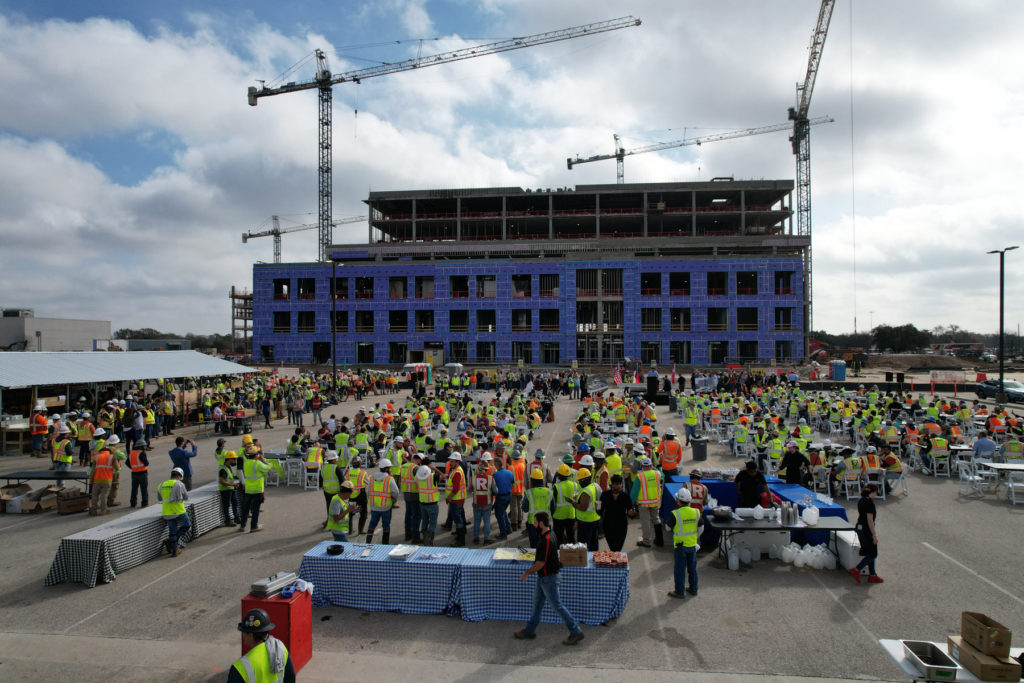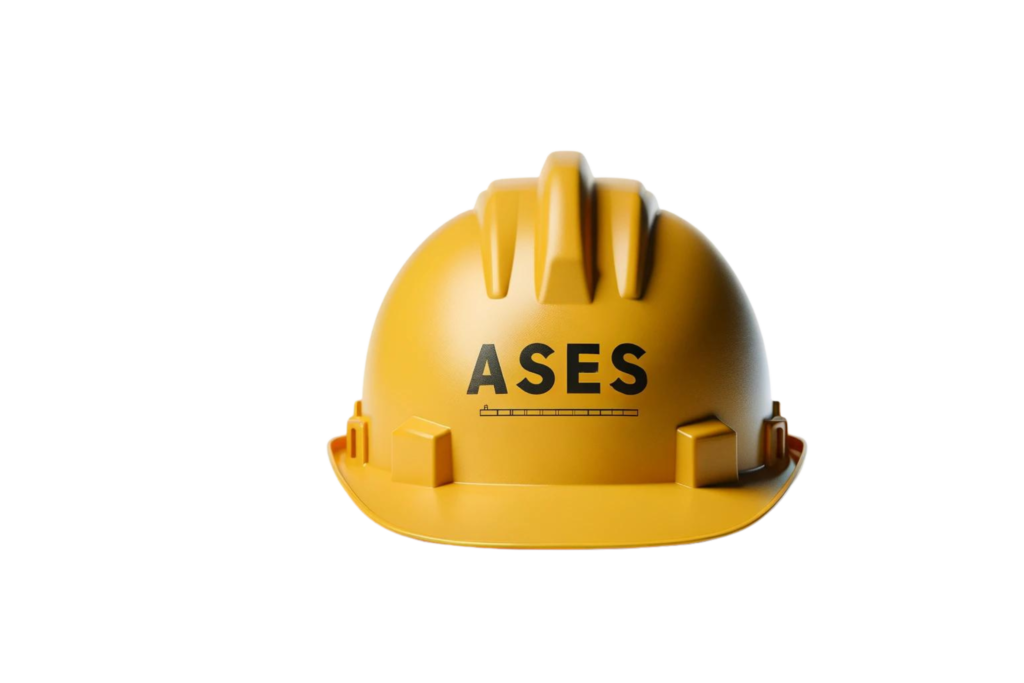Health Construction and Flooring
We tackle the Biggest Challenges in Healthcare Construction
Some people prefer healthcare construction in the existing building. This means the environment you work in may be busy and stressful, with people sleeping or undergoing surgery near your workspace. And, because the healthcare commercial construction goes slower and takes a longer time, it needs to be completed during normal working hours.
However, there might be some challenges you might face during construction.
Impact on Patients and Staff
Patients with varying degrees of health problems visit hospitals. It’s already a high-anxiety environment and then adding noise and disrupting construction will start to impact patients’ and staff’s health conditions. Here, the essential thing is to take into account the safety measures.
Exposure to Dust
In order to minimize exposure to dust or byproducts during construction, it’s crucial to establish processes and utilize the equipment. The implementation of ICRA is a great way to ensure adequate safety measures are in place, which is essential for both hospital and construction team safety.
Affect Patients’ Sleep
Urgent care or Emergency care facility construction during the night may affect patients’ sleep. So, try to deal with every construction-related aspect of the day. During the day, the healthcare workers can help contractors with any mechanical and electrical questions and needs. It allows the team to plan disruptions in a way that will not negatively affect patients.
Key Components of Successful Healthcare Construction Project
Whether you’re planning to build a new hospital, renovate a medical facility, or construct a clinic, having proper strategic planning only makes the healthcare project successful. Because a modern and strong approach to the ambulatory surgical center and other medical facilities improves patient outcomes.
There are various core components of successful healthcare construction, including:
Supporting Care Functions and Goals
In Medical building construction, every design element must be purposeful, thought out, and justified in accomplishing the functional purpose. A well-structured design plan brings a high return on investment (ROI). Therefore, make sure the design blends seamlessly into construction to solve business problems.
The supporting core functions include the facility master plan and the medical care floor plan. Here, a master plan is a comprehensive document and architectural drawing of construction. It summarizes space allocation and usage. On the other hand, the floor plan defines core facility objectives, including the facility’s specific functions, usable spaces, and room sizes.
Evidence-Based Design
In hospital construction, the environments around us matter. It directly affects patient outcomes. That’s why every healthcare facility requires an evidence-based design, which uses research-based principles to influence design decisions. In this, the healthcare commercial contractors properly study the flow, try to improve the processes, and examine the overall patient experience thoroughly.
An evidence-based design vision is essential to building successful hospitals, urgent care clinics, and health clinics today. This means improving the quality of care and the experience of patients.
Long-Term Plan to Support Facility Over Lifecycle
Medical facility building (dental office, urgent care, medical clinic, radiology, or x-ray room, etc.) construction project success depends on setting expectations and developing solutions for a facility’s useful lifecycle.
The success of a long-term build depends on intentional planning and thorough exploration, including long-term design, material, and construction solutions. In addition, facilities must be flexible enough to accommodate tenant movements, expansions, and redevelopments. The interior design must remain appealing for decades after the ribbon cutting.
Our team considers the modular design approach, which includes planning for space allocation, room design, and other effective elements so the facility can adapt to change. Without major facelifts or expensive renovations, it adapts to the lifespan and needs of its users – without owner interference or business interruptions. Our construction materials are also highly durable and adaptable, so we specify cost-effective solutions that last.
Innovation, Collaboration & Value Engineering
In order to achieve best-value construction, steps must be taken early in the project. To get the most bang for your buck, ASES believes in innovation and collaboration. Our designing and building process is unique in the industry, and we deliver the most robust dental office remodeling, construction, and design solutions available.
We create a team for each project, inviting all stakeholders, specialty contractors, and construction professionals at the beginning to identify value-added solutions. As part of our commitment, we ensure that every element of design and construction as well as the overall delivery of the project is aligned with your core objectives and vision.
Sustainability
An integrated process to evaluate best-value solutions and implement green solutions to maximize value. Ultimately, sustainability is a good investment. By using sustainable design and efficient construction, you can save money, increase sustainability, and create value in the long run.
Things to Consider About Healthcare Construction
Whether you’re making constructions in the existing healthcare facility or adding new cabins, it requires successfully planning to execute a project. Our experienced contractors of dental offices and radiology room construction are aware of this level of detail. Even they have a properly developed checklist to cope with all challenges.
Being a healthcare industry owner, make sure you’re aware of basic needful things. If not, let’s help in finding those.
Involvement of Technology
A key to success in construction is embracing technology. The same can be said about hospital construction, another multibillion-dollar industry. Various large construction organizations always invest in leading technology to excel in the healthcare sector curve. Here are some of the cutting-edge solutions you must aware of:
- Project Management Software: It helps healthcare commercial contractors stay organized and keep track of different projects at their various stages.
- Building Information Modeling and Virtual Reality: It helps designers and contractors visualize the facility before construction begins. Through BIM, medical professionals can review designs before plans into action begin.
- Integrated Data Management & Business Intelligence Systems: It collects data to evaluate resources and space efficiency.
- Field Inspection Software: It helps in providing proper project closeout documentation with a complete set of data.
Have a Safety Plan
Every construction project must include proper safety plans. These safety plans aren’t only for the workers and employees working on the project but also for patients that are currently at the medical facility. Above all, Plan all utility shutdowns and switchovers properly and make sure medical staff is informed.
Conduct a Site Inspection
Whether it’s about dental office renovation in the existing medical facility with patients or building a hospital from the ground up, investigating the site is a crucial step. It includes confirmation of all utilities’ locations, such as electrical, plumbing, gas, and many others. During this step, a construction, for example, a dental office renovation, the team properly reviews your site and notes down if any hazards come across. There should be infection control protocols, and low inconveniences for patients associated with construction, like noise, vibration, altered traffic routes, etc.
Consider Healthcare Construction Trends
As technology becomes more readily available, state-of-the-art medical facilities are becoming the norm. And, building state-of-the-art medical facilities requires keeping up with the leaders in the healthcare commercial construction sector.
- Patient Comfort: The hospital and facility where patients feel most comfortable are most likely to provide them with the best treatment. Patients benefit from multi-use facilities because they can receive treatment in one place. So, when planning your next dental office renovation/construction project, consider a multi-use facility and patient comfort.
- Sustainability: Costs rise and power consumption increases with larger hospitals or mega healthcare projects. The healthcare sector that uses sustainable construction promotes cost savings and long-term value for investors. So, remember to consider the environmental impact of the waste from your project as well as the community impact.
Monitoring
To ensure a safe, healthy work environment, it is imperative that every aspect of the urgent care construction project is under control. It is common practice to monitor air pressure during construction/renovation projects in healthcare facilities to prevent dust from escaping into patient areas when negative pressure is being used. If the pressure differential is not maintained properly, dust could affect patients, so monitoring is crucial.
Noise is another thing to keep an eye on. According to the 2005 study of noise at Johns Hopkins, the negative effects of excess noise on patients whose stress levels rise as a result. Taking steps to reduce noise is the contractors’ responsibility. Here are the things to do:
- Invest in tools and equipment that emit less noise.
- Place noisy machines away from sensitive areas.
- Put sound-absorbing mats on temporary barriers.
- Choose other methods to use sound-damping materials.
Moreover, keep an eye on subcontractors to ensure that they’re taking corrective steps to observe any breach of safety protocols.
The Future of Healthcare Construction
In the past few decades, technological advances, medical breakthroughs, and regulatory environments have affected healthcare design and construction. In this day and age, healthcare providers are moving from volume-based care to value-based care – a system that supports population health management and patient outcomes.
In turn, this has changed the philosophy of healthcare construction in the private sector. Healthcare facilities are no longer aiming to achieve maximum occupancy and acuity. In order to support populations and help patients achieve healthier lifestyles, small and medium-sized clinics are strategically placed and designed. The purpose of today’s healthcare facilities is to ensure impactful care that prevents patients from being admitted to the hospital and gets them back to health as quickly as possible.
ASES Company
ASES believes in building a smart and healthier place for patients. We’re a healthcare construction company, working with a full staff of design and construction professionals. We know how to handle unique dental office renovation and other urgent care construction challenges.
With more than 35 years of experience, we help our clients in achieving their goals more efficiently and effectively. From dental office remodeling services to urgent care construction, radiology room construction, and x-ray room construction services, our expertise has positioned us as a leader in medical facility construction.
ASES continues to set high standards for healthcare facilities. It’s our goal to build a better solution every time, every day.
ASES believes in building a smart and healthier place for patients.


We Deliver On Our Quality Promise
Reliable construction services are hard to find. When you trust ASES, you are rewarded with a partner dedicated to building a long-term relationship. Submit your information to start building on your ideas.
